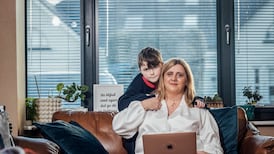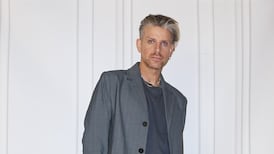Ireland has witnessed significant social change and sometimes dizzying levels of diversity in recent decades. Does that extend to a new willingness to talk about sexuality? And, more specifically, how comfortable are gays and lesbians about disclosing their sexual orientation?
When the Irish Times/Ipsos MRBI Family Values poll asked people to describe their sexuality, one in 25 – or 4 per cent – of respondents described themselves as gay, lesbian or bisexual. The real figure may well be higher, given that 10 per cent of people polled chose not to answer the question. (The margin of error on the 4 per cent statistic was 1.3 per cent.)
The numbers may come as a surprise to some.
One reason is that a figure of 10 per cent for the proportion of homosexuals in the population has persisted as a widely accepted guesstimate. This number seems to have made its way into the public consciousness on foot of the Kinsey reports, two books – Sexual Behavior in the Human Male and Sexual Behavior in the Human Female – based on research led by Alfred Kinsey, a zoologist at Indiana University, in the late 1940s and early 1950s.
Although the reports broke long-held taboos on reporting sexual orientation, Kinsey’s methodology has been strongly critised for over-representing the gay and lesbian population.
But using contemporary opinion polls as a reference, the 4 per cent figure in the Irish Times poll ranks towards the higher end of most surveys. In the UK, for example, a benchmark study by its Office for National Statistics estimated that just 1.5 per cent of people were gay, lesbian or bisexual.
In Australia a national sample put the figure at 3 per cent; in the US the most widely cited national poll in recent years indicates that homosexuality rates are 3.5 per cent.
Sexual orientation
So the demographics of sexual orientation pose challenges for researchers.
There is evidence to suggest that when sensitive questions are asked in person or over the phone, more people are likely to refuse to answer; anonymised or self-reported data tends to have a higher success rate.
Then there’s the complex issue of identification. Just because a person has sexual experiences or attraction to a person of the same sex doesn’t mean they will identify themselves as gay or bisexual.
That’s why health researchers seeking information on HIV, for example, survey “men who have sex with men” rather than gay men. On top of that, many members of the LGBT community continue to feel the need to conceal their sexual identity.
“Despite all the transformative changes over last 20 years, we know about half of the community is still not fully open in the workplace,” says Brian Sheehan of the Gay & Lesbian Equality Network.
“They fear it will damage their prospects or they’re unsure of the reaction of colleagues. Or, outside of work, there are fears about physical or verbal harassment. So there are many valid reasons why people won’t declare their sexual orientation.”
In our Family Values poll the 10 per cent who chose not to answer were more likely to be older; younger people were more likely to identify themselves as gay or bisexual.
This suggests that younger people are more open to answering the question and that the real proportion of older people who are gay, lesbian or bisexual may be higher than reported. A survey by the youth-mental-health charity Headstrong would appear to back this up.
In a recent survey of 8,000 young adults, aged between 17 and 25, a total of 8 per cent identified themselves as gay, lesbian or bisexual; 3 per cent said they weren’t sure. These findings weren’t based on a fully random sample, however.
Because of these discrepancies, policymakers tend to set figures on the estimated gay, lesbian and bisexual population. When the UK government was analysing the financial implications of civil partnerships, for example, it estimated the population to be about 6 per cent.
Gay-rights groups, such as the Gay & Lesbian Equality Network in Ireland and Stonewall in the UK, accept that the real figure is likely to be somewhere in that region.
What we know for sure is that people seem to be increasingly confident about identifying themselves as gay.
The census doesn’t ask people if they are gay or lesbian. But data on cohabiting couples shows increasing numbers of self-declared same-sex couples over the past decade or so. The 2011 census found there were just more than 4,000 same-sex couples living together, a 95 per cent increase from the 2006 census.
Since civil partnerships were introduce for gay couples, in April 2011, more than 3,000 people have entered legally binding unions.












